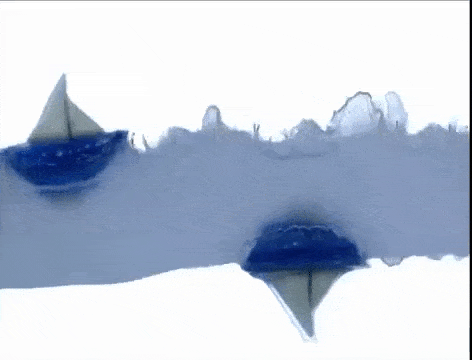Researchers in France affiliated with the Institut Langevin and Sorbonne Université have pulled off quite the ‘magic’ trick. By exploiting a counter-intuitive anti-gravity-like phenomenon in physics that arises when fluids are vibrated, the researchers not only made a fluid levitate but also had a small toy boat float upside down.

Since the 1950s, physicists have noticed that fluids under relatively high-frequency vibrations (100 Hz or more) can cause gas bubbles to sink unearth the liquid, causing it to rise and to levitate.
In their new study, researchers led by Benjamin Apffel from the Institut Langevin in Paris, now report a new quirk of this phenomenon: objects can actually float upside down on the bottom layer of the levitating fluid.
During their experiment, the researchers filled small tubs with either glycerol or silicone oil, then proceeded to shake the tub with a vibrating machine. The liquids quickly rose from the bottom of the tub, hovering on top of a layer of gas bubbles. No surprise there.
What was truly eye-opening was the fact that a small toy boat (7 grams in mass and 2.5 cm in length) could float and even move partially submerged on the underside of the levitating fluid, seemingly defying gravity.
Writing in the journal Nature, the authors of the study claim that the vertical vibrations cause oscillations on the effective gravitational force exerted on both the fluid and any objects submerged onto the fluid. This leads to a time-averaged force applied to the submerged body, enabling the body to float on the lower interface of the fluid.
“Bodies can thus float upside down on the lower interface of levitating liquid layers. We use our model to predict the minimum excitation needed to withstand falling of such an inverted floater, which depends on its mass. Experimental observations confirm the possibility of selective falling of heavy bodies. Our findings invite us to rethink all interfacial phenomena in this exotic and counter-intuitive stable configuration,” the authors wrote.
Beyond a simple oddity or curiosity of science, the effects of high-frequency oscillations on systems could have implications for research in chemistry, physics, and biology.


